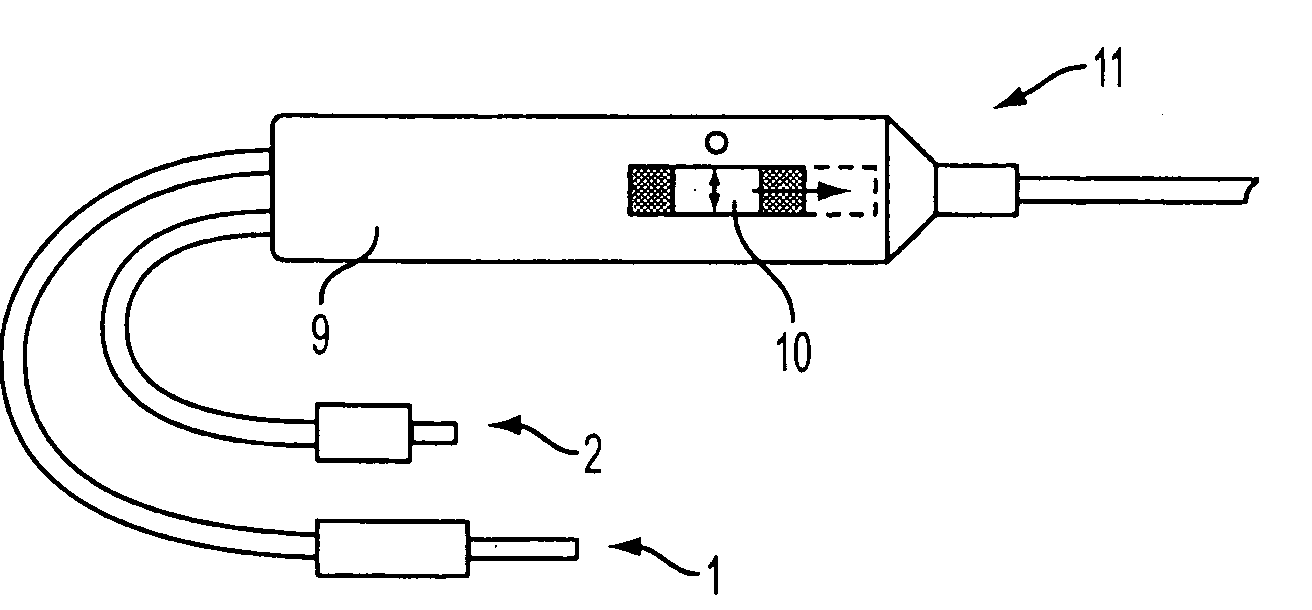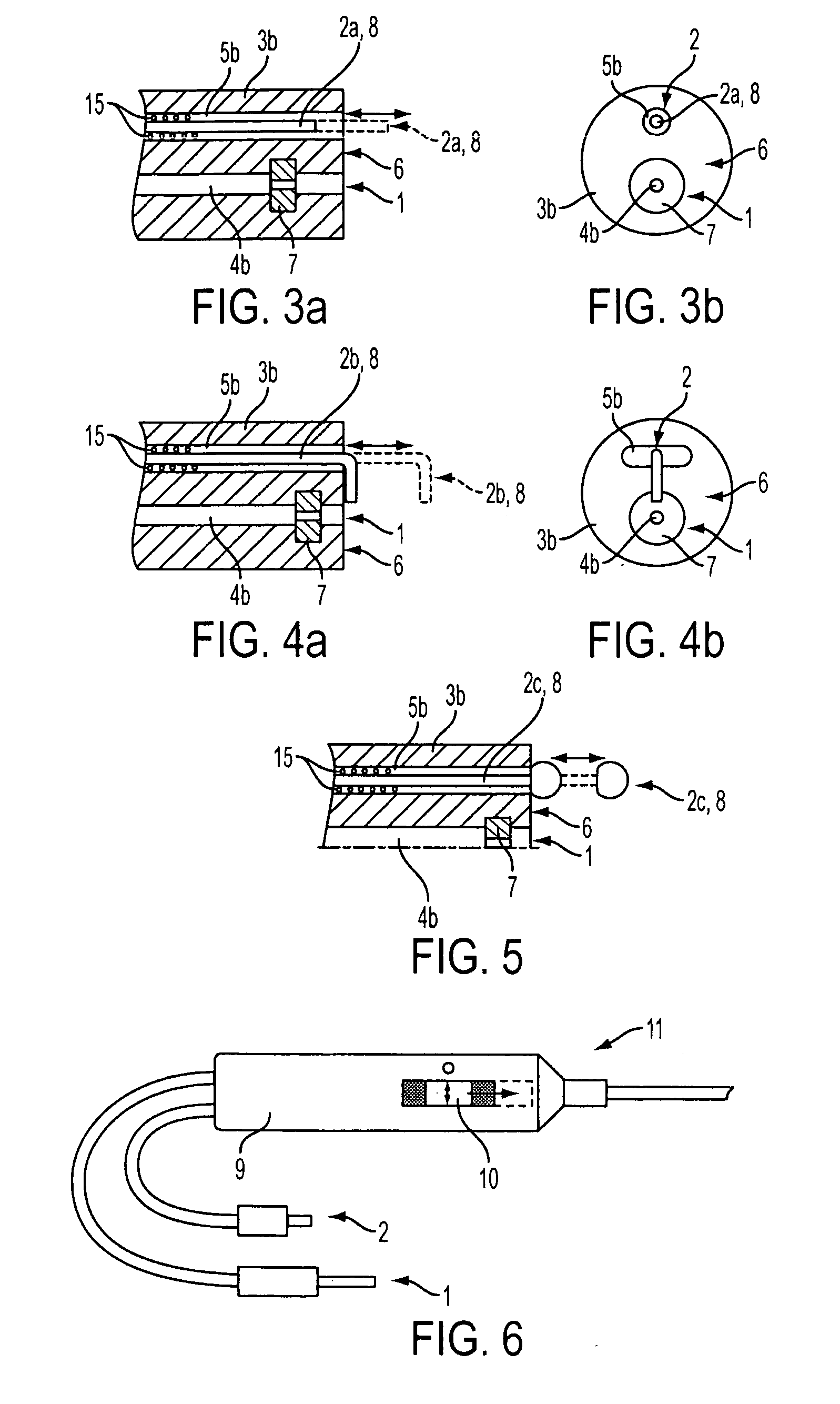Method for selectively elevating and separating tissue layers and surgical instrument for performing the method
a surgical instrument and tissue layer technology, applied in the field of selectively elevating and separating tissue layers and surgical instruments for performing the method, can solve the problems of incomplete perforation of the target tissue, rapid fluid escape, and difficulty in maintaining fluid retention within the tissue, and achieves selective elevation of the mucosa, simple and economical solution, and significant reduction of the probe diameter
- Summary
- Abstract
- Description
- Claims
- Application Information
AI Technical Summary
Benefits of technology
Problems solved by technology
Method used
Image
Examples
Embodiment Construction
[0044]In one embodiment of the invention, a catheter device is provided and used for the delivery of a fluidic, therapeutic or diagnostic agent under a suitable pressure (selected on the basis of targeting a selected tissue layer) in order to selectively elevate, separate, and / or resect selected portions of tissues. As shown in FIGS. 1a and 1b, the distal end 6 of probe 3 comprises a channel 4 for feeding through at least one liquid through nozzle 7 at a suitable pressure. The suitable pressure can be changed according to the desired task. For selectively elevating and separating tissues, a certain target pressure is desired; for coagulating small vessels, a different target pressure may be desired; and for resecting or cutting selected tissues, a different target pressure may be desired. Probe 3 is preferably flexible in nature and can be comprised of a variety of different suitable materials. For example, the flexible probe 3 may be constructed from, nylon, PEEK, polyimide, stainl...
PUM
 Login to View More
Login to View More Abstract
Description
Claims
Application Information
 Login to View More
Login to View More - R&D
- Intellectual Property
- Life Sciences
- Materials
- Tech Scout
- Unparalleled Data Quality
- Higher Quality Content
- 60% Fewer Hallucinations
Browse by: Latest US Patents, China's latest patents, Technical Efficacy Thesaurus, Application Domain, Technology Topic, Popular Technical Reports.
© 2025 PatSnap. All rights reserved.Legal|Privacy policy|Modern Slavery Act Transparency Statement|Sitemap|About US| Contact US: help@patsnap.com



